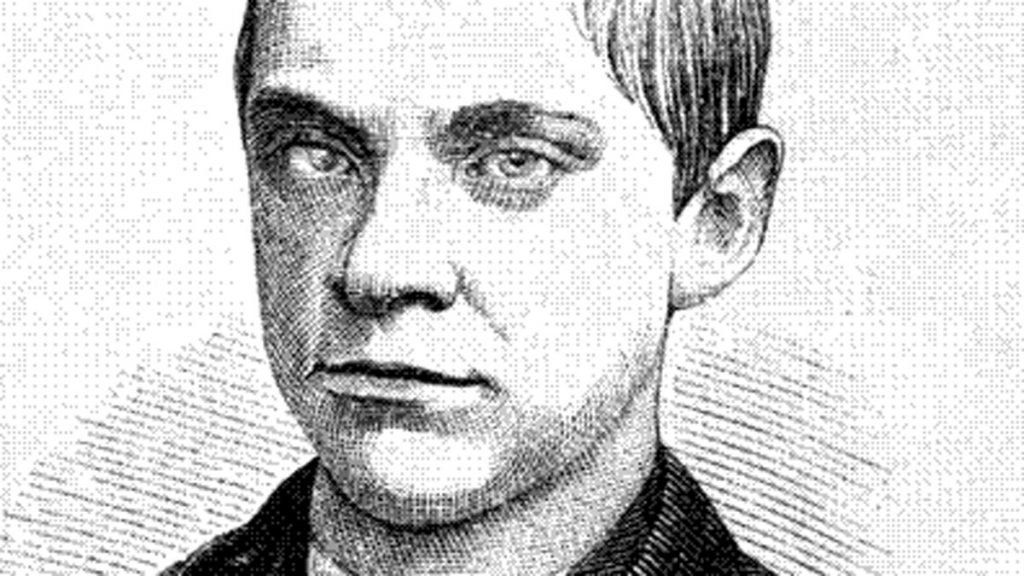Trends
Meet Jesse Pomeroy, The Youngest Serial Killer In America History
Jesse Pomeroy was a convicted American murderer and is popularly known as the youngest serial killer In American history after being convicted by a jury trial held in the Supreme Judicial Court of Suffolk County at the age of 14.

Jesse Pomeroy was a convicted American murderer and is popularly known as the youngest serial killer In American history after being convicted by a jury trial held in the Supreme Judicial Court of Suffolk County at the age of 14.
Jesse Pomeroy was born on November 29, 1859, in Massachusetts, to Thomas J. Pomeroy, a veteran of the U.S. Civil War and Ruth Ann Snowman. He was the second of two children; his brother Charles Jefferson Pomeroy was two years older.
While Jesse was an infant he developed an ailment that was then referred to as “humour”. Though he recovered from the unspecified ailment, his right pupil had been scarred at birth and would be covered in a thick film for the rest of his life.
Jesse Pomeroy was five years old when his neighbour claimed he stabbed a cat to death and threw it into the river. One of his teachers said he was “peculiar, intractable, not bad, but difficult to understand.” Pomeroy hated being corrected and ultimately became a loner.
Pomeroy’s father reportedly beat him with a horsewhip on a regular basis and ordered him to strip down naked. And his mother, Ruth, said a serious case of pneumonia in October 1871 had left him “not so well.”
Around Charlestown where Jesse grew up, children reported being beaten and sexually assaulted by a larger boy. They said he had lured them away with the promise of sweets and then violated them, disfiguring their faces and genitals with a knife and pins. His description was published in The Boston Globe
In these descriptions, Ruth Pomeroy recognized her son, who was called “The Boy Torturer” and “The Red Devil” by newspapers. Quietly, she moved her family to South Boston. But in August 1872, a boy was found tortured on the beach. And another was found beaten, raped, and tied to a telephone post in September.
One victim told authorities that the perpetrator had a marbleized eye, which quickly led to the arrest of 13-year-old Jesse Pomeroy. Facing six years at the State Reform School in Westborough, Pomeroy’s mother managed to get him released within months.
Jesse Pomeroy had been out on parole for barely a month when 10-year-old Katie Curran disappeared from her home. Since she was last seen at Ruth Pomeroy’s shop, where Jesse worked, authorities questioned him and searched the store, though they found nothing.
Five weeks later, however, Pomeroy’s boot prints were discovered next to the body of four-year-old Horace Millen. The boy had been nearly decapitated and dumped on the beach. When police returned to question Pomeroy, they found scratches on his skin and blood on his clothes.
Jesse Pomeroy was arrested on April 24, 1874, and confessed after being confronted with Millen’s body.
Unfortunately for Jesse Pomeroy’s family, things only got worse after Ruth sold her store for much-needed cash after the arrest, and the new tenants discovered the decomposing corpse of Katie Curran in her basement. Pomeroy confessed, yet again.
His trial began on Dec. 9, 1874, shortly after Pomeroy’s 15th birthday. It ended the next day. And although the jury rejected the defence’s insanity plea, it offered Pomeroy leniency because of his age. The judge vehemently disagreed, however, and sentenced him to death.
Deeming him too young for such a fate, the governor’s office refused to sign the judge’s order of execution. After two years and three separate votes, Pomeroy’s sentence was commuted to life in solitary confinement. The 16-year-old was incarcerated in Massachusetts State Prison on Sept. 7, 1876.
Over the next 50 years, Jesse Pomeroy would try to escape at least a dozen times. He nearly succeeded after rerouting the gas pipes of his cell to trigger an explosion, but the blast saw him incapacitated. In the end, he spent his time learning several languages, writing poetry, and allegedly investing in the stock market.
In 1929 he was transferred to the State Prison Farm in Bridgewater, Massachusetts, to live out the rest of his days. Three years later, he died of a heart attack, just shy of his 73rd birthday, on Sept. 29, 1932.
Source; allthatsinteresting.com
